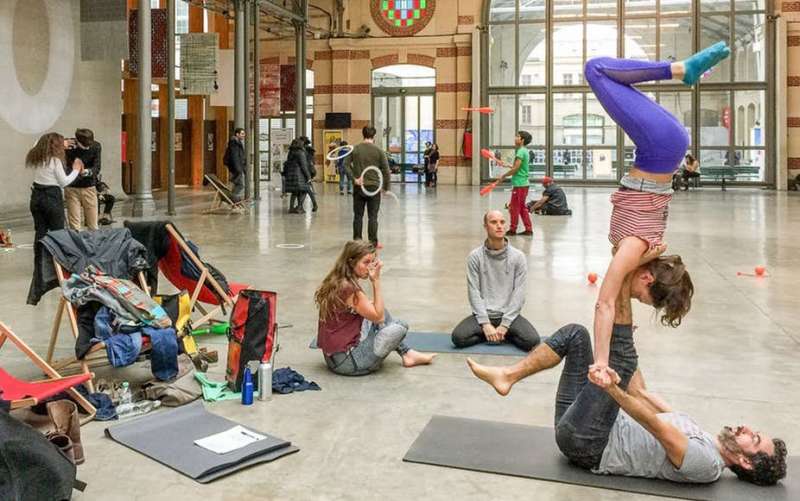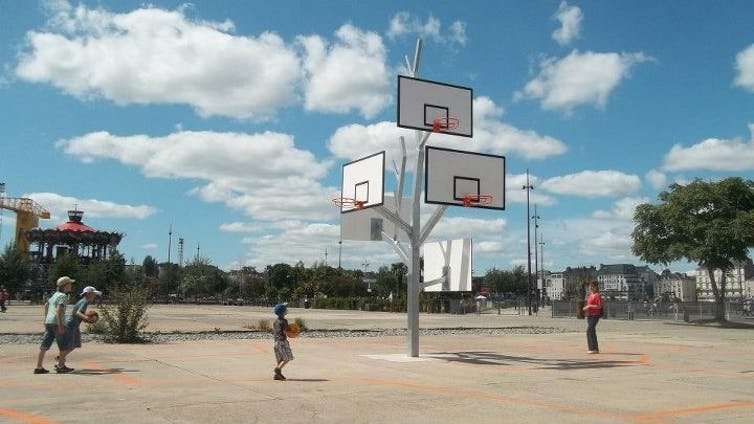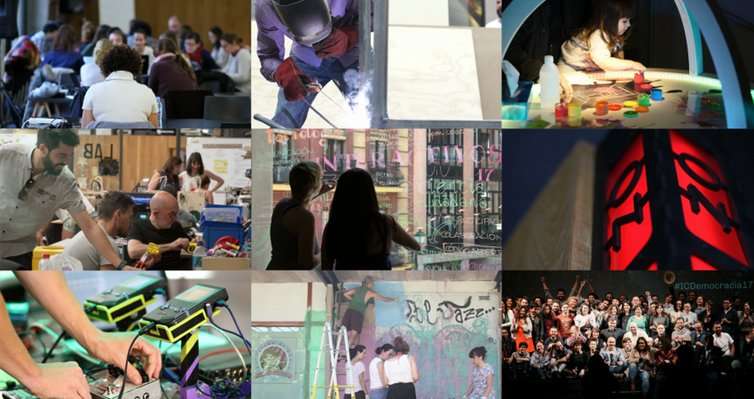The hypothesis of cultural third places

Many cultural places are being transformed through the mutations of digital world, reduced public financing and the rise of the knowledge-based economy.
This is the case of third places libraries, defined as places of sociability and encounter rather than areas strictly for book reading and learning. These libraries introduce additional uses not directly connected to knowledge, including public services, coworking spaces and even leisure activities – knitting, yoga, cooking… Like the Mériadek Library in Bordeaux, or Lezoux media library, third places libraries are centred on users, and prioritise to digital tools and new learning patterns, such as serious games and collaborative platforms.
Cultural science centres, like Medialab Prado in Madrid (Spain), Cap Sciences (Bordeaux, France) or Quai des Savoirs (Toulouse, France) are reinventing their mediation patterns ; they build them on collective intelligence methods (developed in living labs) and fast prototyping tools (fab labs).
These new generation centres propose multiple spaces with different social and functional dimensions, including interactive exhibition rooms, knowledge café, workshops, creativity rooms, and test rooms for digital devices. At the opposite of the diffusion of culture and knowledge politics towards the "general public", everything is designed so the visitors can build in an active and ascendant way new knowledge, culture or creative devices.
Museums such as the Arts Décoratifs in Paris or the Musée Gallo-Romain in Lyon have transformed themselves into genuine laboratories for real-time experimentation during Museomix events. These three-day meetings have been held over the past years, bringing together hundreds of participants (coders, cultural mediators, curators, designers, amateurs, hackers) who were in charge of inventing new exhibition forms and developing possible interaction with artworks.
Former industrial sites such as the Friche Belle de Mai in Marseille (France), the 104 in Paris (France) or Emsherpark Park in the Ruhr region of Germany, stand up for a dynamic vision of their cultural heritage. These urban brownfields now open up culture to experimentation and coproduction, some for more than 20 years now.
This concern is shared by university campuses, which consider themselves as spaces that open up to their surrounding regions. That's why we're witnessing the introduction of residential and commercial buildings, cafeterias, cultural, sports and leisure facilities, as well as the areas that enhance the economic development of knowledge – business incubators, coworking spaces and more. One such example is Ørestad College in Copenhagen, which promotes collective learning, based on "doing".
Ephemeral events and cultural venues have also developed within the cities in the past years. Examples include events like Le Voyage à Nantes or Un Eté au Havre and Les Grands Voisins in Paris. Other initiatives encourage experimentation and coproduction in cities' public spaces, like Nantes City Lab, Madrid's Laboratorios Ciudadanos, or the "spaces for dreaming" in Leipzig (Germany).
The hypothesis of cultural third places
These third places share a common belief in the importance of moving away from an elitist and diffusionist vision of culture to take interest in informal actors and in everyday social spaces. They seek to interconnect the written, digital and technical cultures of knowledge and other forms, whether they be academic, practical, expert or profane.

Beyond these characteristics, it seems essential to better define these cultural places as well as the current transformations. That's why we rely on the concept of the "third place" developed by American sociologist Ray Oldenburg. He hypothesized of an increasing development of open and hybrid spaces (between the residence and workplace) that facilitate the meeting between heterogeneous actors and multiple resources. This is the case, for example of third places of activity and coworking spaces, that are specialized in the creation of shared and collaborative workspaces. Then there are fab labs or living labs, which seek to stimulate innovation through collective intelligence, experiment and prototyping. Social third places and spaces of public innovation pursue clear social objectives on important issues facing our society, in citizen participation and public action policy.
Our hypothesis is that we are seeing the emergence of a new category – the cultural third place. We define them as hybrid and open spaces of knowledge and culture sharing, where the user (a visitor, reader, student, spectator…), finds his or her place at the heart of the learning, production and dissemination processes of cultures and knowledge. The cultural third places are embedded throughout their territory and position themselves between lofty cultural institutions and on-the-ground residents. Cultural third places promote a culture of experimentation, staging and coproduction of knowledges and cultures.

Many issues
The hypothesis of the cultural third places is valid only if cultural places are precisely observed and if the following problems are investigated:
- To what extent do cultural third places play a key role in social life? Do they succeed in embedding socially both knowledge and culture? Do they manage making technical and digital innovations a real social learning?
- How do cultural third places regulate the tensions and to overtake structuring antagonisms between science and knowledge, digital technology and written culture, abstract approach and experimental approach, space for reflection and space for sociability, institutional site and alternative places, knowledge society (the commons) and knowledge based economy (the market)?
- Does the bringing together of knowledge, cultures and of multiple actors with potential or actual differing interests, allow to improve the mechanisms of production and distribution of knowledge? And consequently, what are the positive and negative externalities (identity-related tensions, increase of the social distance, etc.)?
- What are long-term risks of this generalised movement of despecialisation of cultural centres? Are we about to witness the emergence of generic spaces, invalidating the attempts to differentiate libraries, museums, incubators or public service organizations?
- Are cultural skills and traditional occupations satisfactory enough to take into account the risks of the new stakes inherent to cultural third places?
- Finally, are cultural third places an omen of new forms of producing and disseminating knowledge? Or are they only "aesthetic screens" hiding the reality of budget restrictions and the decline of some cultural and knowledge venues?
It is toward this complex of issues that we will direct our attention in a next article, that will present a critical reading of cultural third places.
Provided by The Conversation
This article was originally published on The Conversation. Read the original article.![]()




















